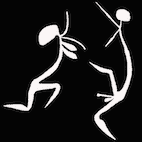Enraeld Munkara Tipungaleralumi Djulabinyanna (1882–1968)
Born in 1882 on Bathurst Island, Enraeld Munkara Tipungaleralumi Djulabinyanna was one of the most remarkable early Tiwi sculptors. He is remembered for his evocative human figures, carved with a singular vision.
Both a ceremonial leader and master carver, Munkara is remembered for transforming the traditions of the Pukumani ceremony into a highly distinctive sculptural form. His career flourished during the mid-20th century, and his works were among the earliest Tiwi carvings to enter national and international collections
Enraeld Munkara was possibly the most distinguished sculptor among the Tiwi people. He produced very powerful painted sculptures of Purukapali and Bima.
If you have an Enraeld Munkara aboriginal sculpture to sell please contact me. If you just want to know what your Enraeld Munkara sculpture is worth to me please feel free to send me a Jpeg. I would love to see it.
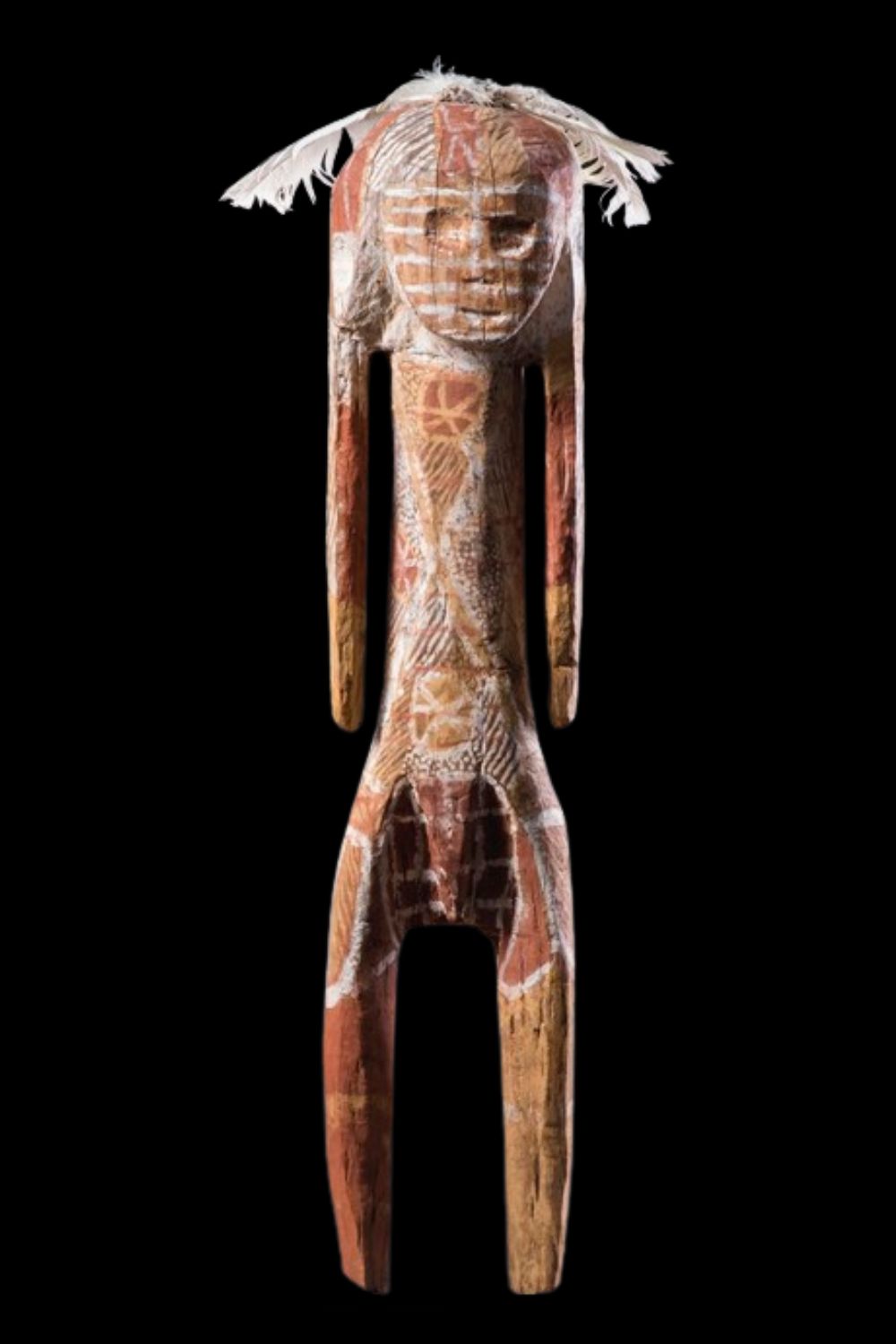
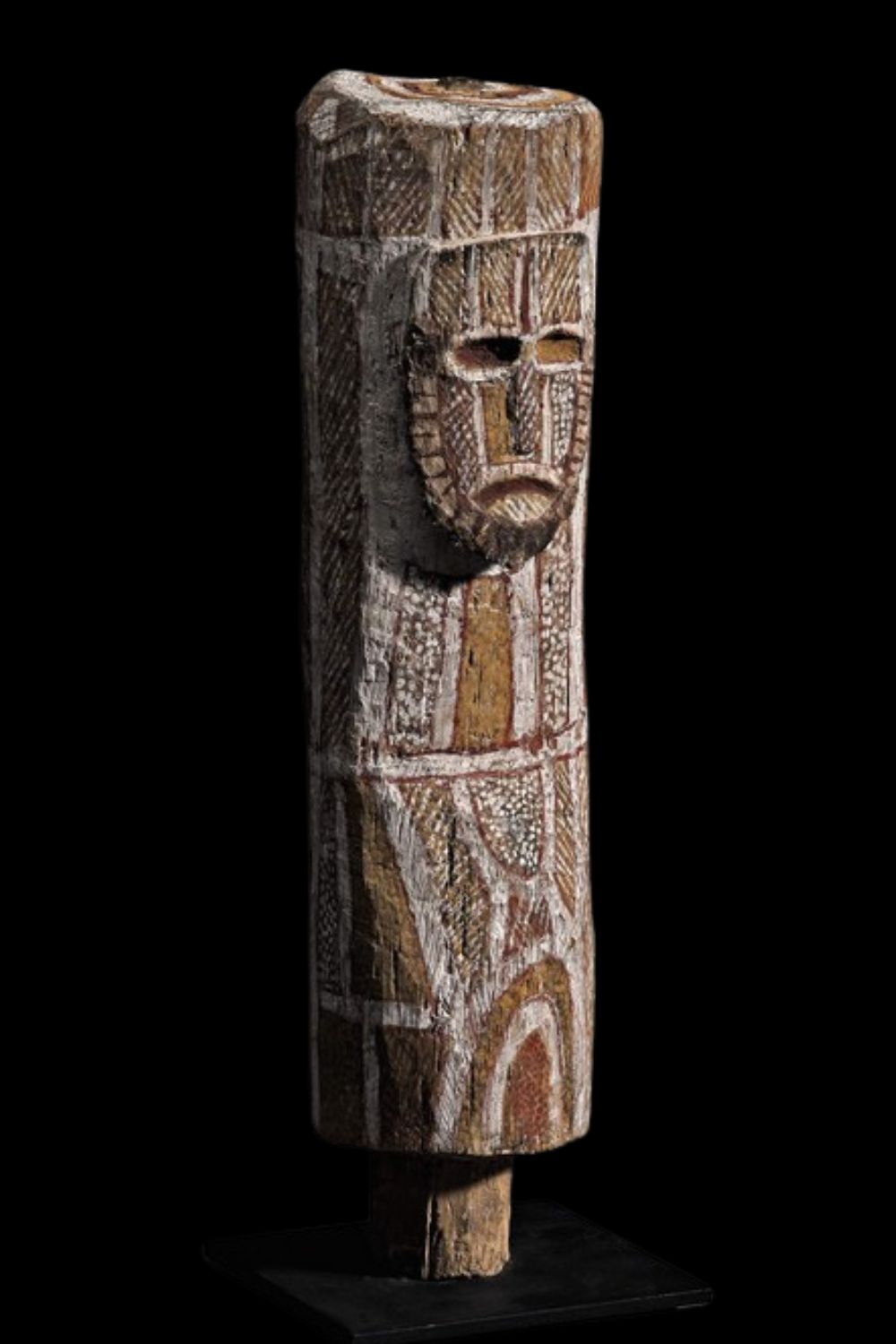
Style
Enraeld Munkara’s work is distinctive. He carved sculptures with arms extend directly from a bulbous head. The legs of his figures run straight down from flared hips. He often leaves a defined negative space between the legs which resembles Pukamani grave posts. His carvings have raw unrefined power to them. He paints them with the same designs as used as skin designs during ceremony.
Enraeld’s sculptures have distinctive anatomy, in which the head and torso are often carved as one, or the raised shoulders appear to extend directly from the sides of the head. Many of his figures stand in animated dance positions, leaning forward with hunched shoulders, one arm extended or held rigidly against the body. These postures reflect Tiwi ceremonial dances in which men and women embody their totems—bird, crocodile, or other ancestral beings—through rhythmic stamping and deliberate gestures.
Due to lack of missionary influence, he is not ashamed to clearly show the sex of the figure. His sculptures are raw but have great clarity.
Faces were delicately painted, bodies adorned with geometric designs, echoing the painted surfaces of ceremonial performers. Viewed closely, his figures reveal a haunting quality—deeply human, expressive, and often mournful—evoking the atmosphere of the Pukumani, the great mortuary ceremonies of the Tiwi. Occasionally, Enraeld departed from funerary figures, producing striking carvings of birds, including owls and ducks, further demonstrating his versatility and imagination.
Pukumani Figures and Early Collectors
Enraeld’s reputation spread early among collectors, particularly Dorothy Bennett and her son Lance, who prized the raw power of his figures. At the time, these sculptures were described as small grave markers, intimately tied to funerary practice. Their purpose was to appease the deceased’s spirit—the Mopaditti—by providing it with carved companions, preventing the spirit from troubling surviving relatives.
Enraeld was among the first Tiwi artists to make Pukumani figures available for sale to Europeans. While Charles Mountford obtained examples at Snake Bay and Karol Kupka secured two works for the Swiss Museum in 1956, Enraeld’s output represents one of the earliest and most authentic cross-cultural exchanges between Tiwi art and the emerging international market.
Collections and Legacy
A significant number of Enraeld’s carvings are now represented in major public and private collections. The Australian Aboriginal Art Museum in the Netherlands holds no fewer than thirty of his sculptures, gifted by the noted collector Thomas Vroom. Other examples are held by state galleries across Australia, where they are celebrated as seminal works in the history of Tiwi art.
As a leader of the Tikelarru group from southwest Bathurst Island, Enraeld also played an important cultural role. His nephew, Benedict Munkara, later succeeded him as a member of the Tiwi Tribal Council in the 1960s, continuing the family’s influence in Tiwi governance and ceremonial life.
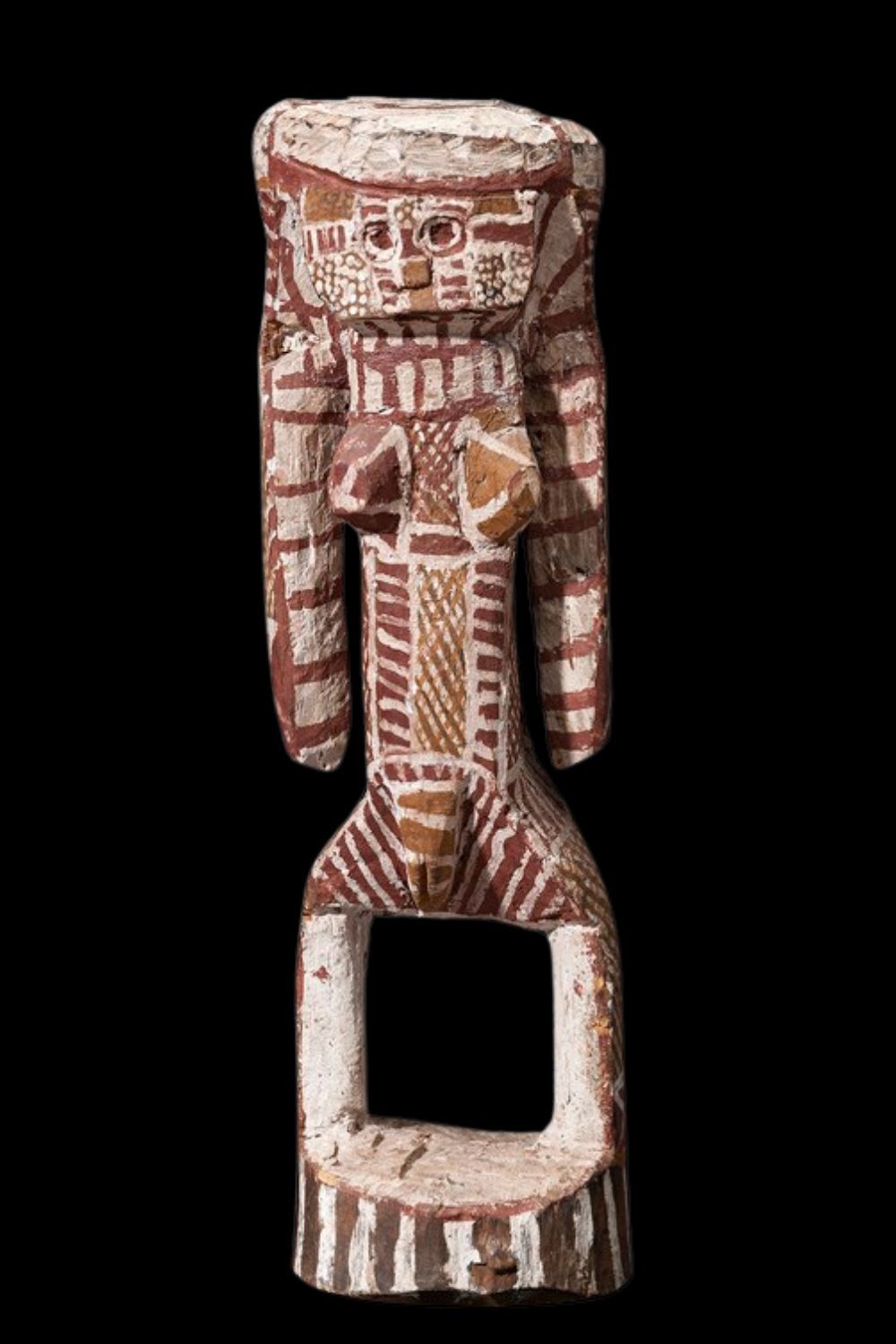
Biography
Munkara lived at Milikapiti (Snake Bay). He belonged to a group of artists on Melville Island in the 1950s and 1960s whose work was less influenced by the local Mission. He was one of the pioneer sculpture carvers of this area. I have little doubt he carved Tiwi island spears and Pukumani posts for a ceremony before making commercial sculptures. His younger brother Benedict Munkara was also a gifted carver.
Enraeld endured the disfiguring effects of yaws, a tropical disease that damaged his nose. In his later years, he was often seen wearing a strip of cloth across his face in public. Despite these hardships, he maintained his authority and presence within Tiwi society. At the time of his death in 1968, aged eighty-six, he was the oldest living Tiwi man and one of the last direct links to the ceremonial traditions of the nineteenth century.
Other Pioneer artists working in Snake Bay and Paru at the same time as Enraeld include Mungatopi Mick Aruni and Kerinauia
Very little information is available about the life of Enraeld Munkara. if anyone has further information, please contact me. I would love to add it to this article.
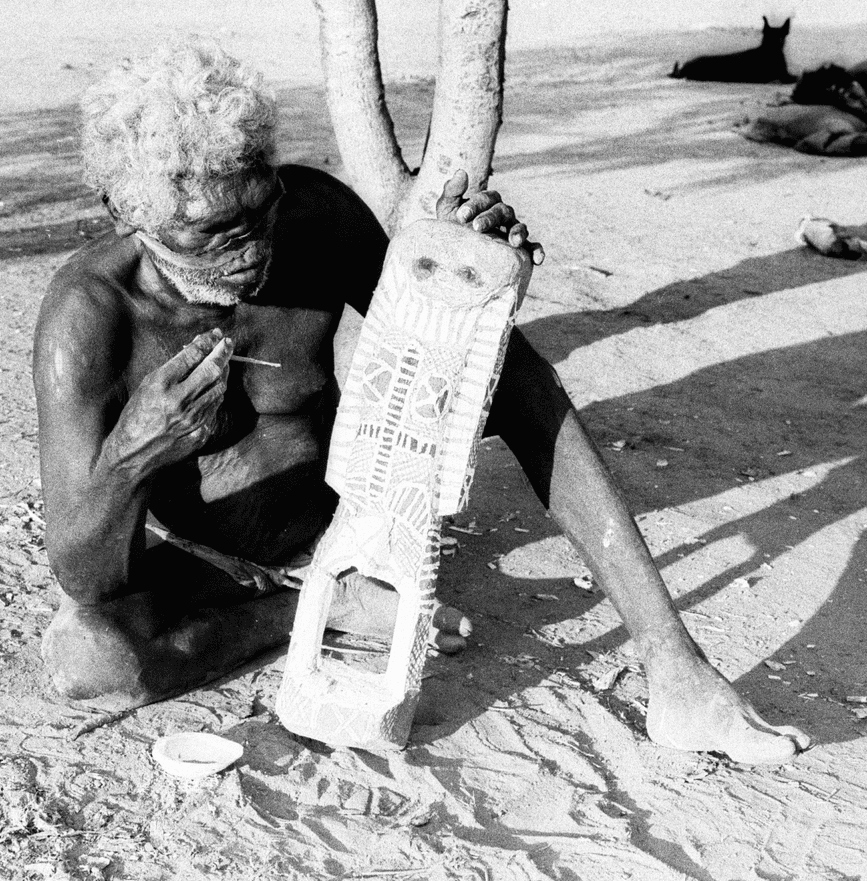
Enraeld Munkara References
All images in this article are for educational purposes only.
This site may contain copyrighted material the use of which was not specified by the copyright owner.
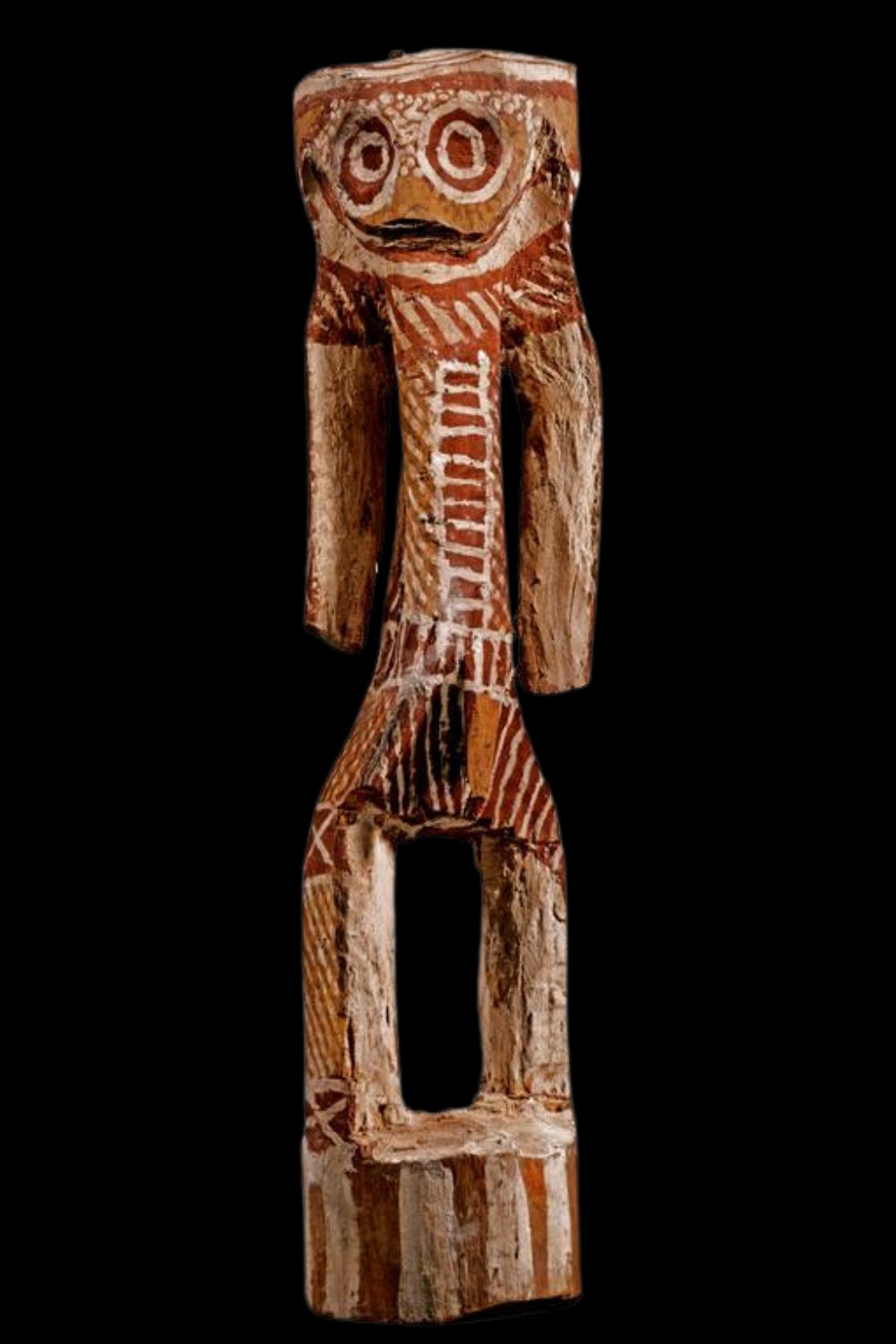
Purukupali and Bima
Munkara sculptures depict a Tiwi Dreamtime story about Purukupali and Bima.
Purukupali was the first man on earth and while he was away hunting his wife Bima was seduced by Purukapali’s younger brother Tapara. While making love to his brother she left her baby Jinani under a tree. The baby died when the hot sun shifted and the baby was no longer in the shade. When he returned Purukupali in his grief walked into the sea with his dead son and disappeared forever. Tapara, with his face slashed by a stick, became the moon. Bima became a curlew (bird). To the Tiwi people, Purukupali was the first death, This first death was the cause for the first Pukumani (burial) ceremony.
